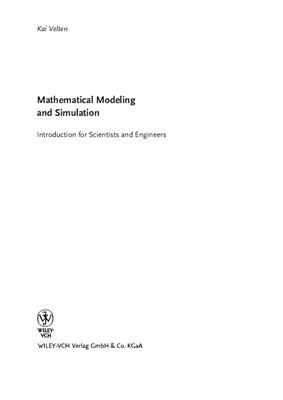Wiley, 2009. - 362 pages.
This concise and clear introduction to the topic requires only basic knowledge of calculus and linear algebra — all other concepts and ideas are developed in the course of the book. Lucidly written so as to appeal to undergraduates and practitioners alike, it enables readers to set up simple mathematical models on their own and to interpret their results and those of others critically. To achieve this, many examples have been chosen from various fields, such as biology, ecology, economics, medicine, agricultural, chemical, electrical, mechanical and process engineering, which are subsequently discussed in detail.
Based on the author's modeling and simulation experience in science and engineering and as a consultant, the book answers such basic questions as: What is a mathematical model? What types of models do exist? Which model is appropriate for a particular problem? What are simulation, parameter estimation, and validation?
This concise and clear introduction to the topic requires only basic knowledge of calculus and linear algebra — all other concepts and ideas are developed in the course of the book. Lucidly written so as to appeal to undergraduates and practitioners alike, it enables readers to set up simple mathematical models on their own and to interpret their results and those of others critically. To achieve this, many examples have been chosen from various fields, such as biology, ecology, economics, medicine, agricultural, chemical, electrical, mechanical and process engineering, which are subsequently discussed in detail.
Based on the author's modeling and simulation experience in science and engineering and as a consultant, the book answers such basic questions as: What is a mathematical model? What types of models do exist? Which model is appropriate for a particular problem? What are simulation, parameter estimation, and validation?

